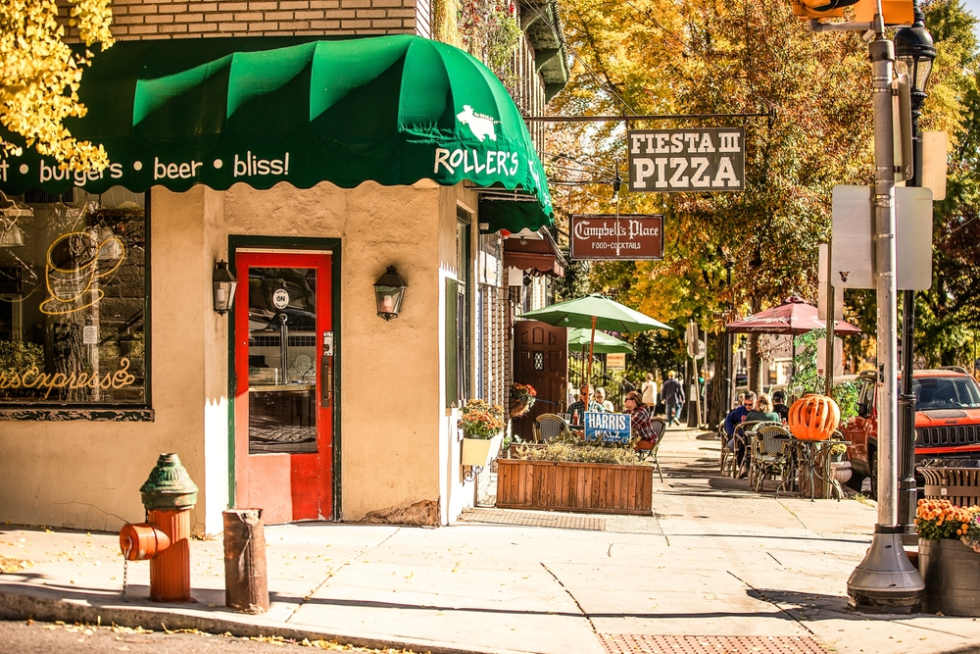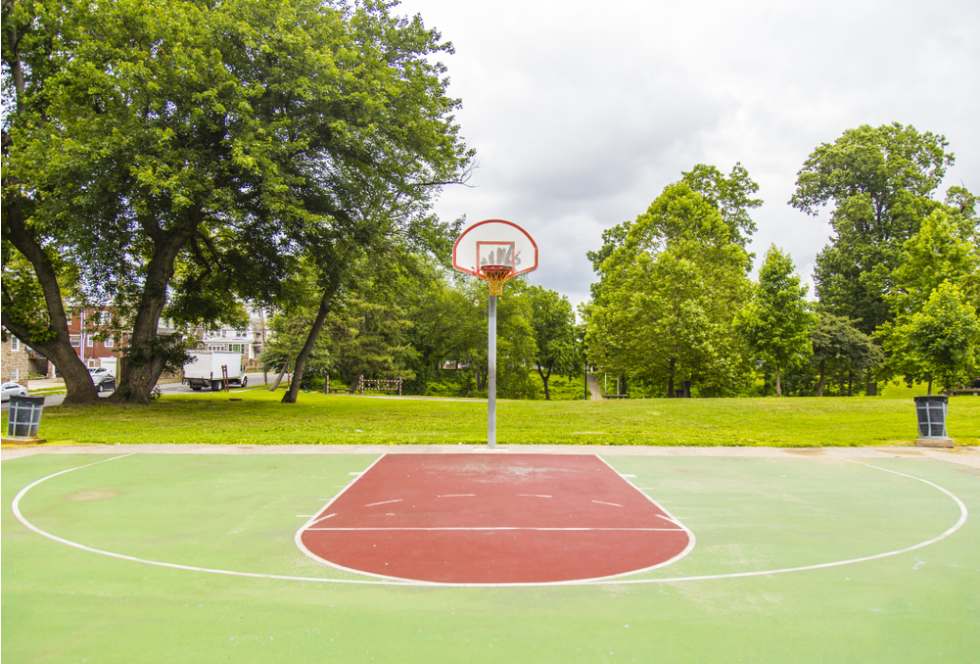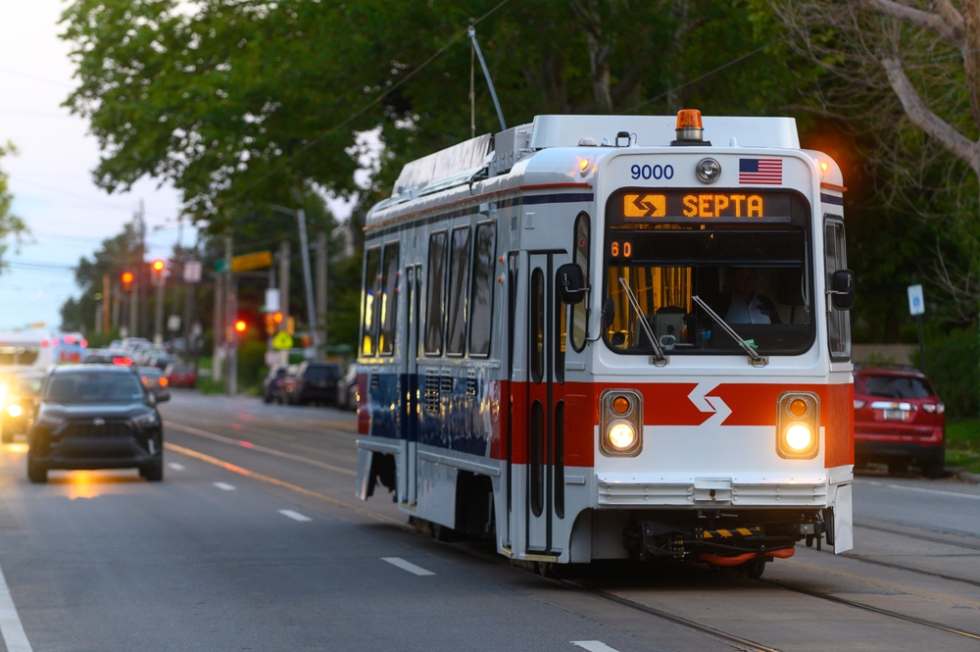South Bank at Quarry Trails
- 91 units available
- Studio • 1 bed • 2 bed • 3 bed
- Amenities
In unit laundry, Patio / balcony, Granite counters, Pet friendly, Stainless steel, Walk in closets + more

Philadelphia has plenty of safe neighborhoods for renters in 2025, and this guide highlights nine that stand out. From leafy enclaves like Chestnut Hill to amenity-rich city neighborhoods like Bella Vista, these areas offer the rare combo of lower crime rates, livable rent, and everyday peace of mind.
With safety top of mind for many renters, understanding which parts of the city are statistically safer can make a huge difference. We used the latest violent and property crime data from CrimeGrade.org and the Philadelphia Police Department, plus verified rent estimates from Apartment List, to pinpoint where your money (and peace of mind) goes further.
Below, you’ll find a neighborhood-by-neighborhood breakdown that includes average rent, safety metrics, nearby transit, and what life’s really like in each area. Use this 2025 guide to confidently find a place in Philly where you’ll feel secure coming home.
Philadelphia’s overall safety profile is gradually improving in 2025. According to the latest data from the Philadelphia Police Department, citywide violent crime is down 9.96% year-to-date compared to the same period in 2024, while property crime has decreased by 8.25%. Despite this positive shift, Philadelphia still holds a C+ safety rating overall, which puts it roughly in the 40th percentile nationwide.
Neighborhood-level differences in crime rates, however, tell a more important story. While some areas closer to Center City continue to report higher rates of theft and vehicle break-ins, residential pockets in the northwest and far northeast, like Chestnut Hill and Pennypack, maintain significantly lower crime rates.
The city has also invested in new safety initiatives, including expanded Safe Routes Philly programs near schools, and targeted foot patrols in high-traffic commercial zones. But renters should rely on hyperlocal data when apartment hunting. Citywide averages don’t reflect the sharp contrasts between neighborhoods, and that’s where our guide can help.
Philadelphia’s 2025 crime index is 38 (on a 0–100 scale), meaning it’s safer than 38% of U.S. cities, an improvement over 2024’s index of 35.
| Crime Type | Rate Per 1,000 Residents |
|---|---|
| Assault | 1.639 |
| Robbery | 0.6479 |
| Rape | 0.3577 |
| Murder | 0.0837 |
| Total Violent Crime | 2.728 |
| Burglary | 1.298 |
| Theft | 10.96 |
| Motor Vehicle Theft | 2.402 |
| Arson | 0.0808 |
| Total Property Crime | 14.74 |
Theft is driving a large portion of property crime in Philadelphia, currently over 10.96 incidents per 1,000 residents, making it one of the fastest-growing crime categories in the city.
For renters prioritizing peace of mind, several Philadelphia neighborhoods report crime rates well below city averages, making them top picks for 2025. While Philadelphia’s total crime rate sits at roughly 23.58 incidents per 1,000 residents, some standout areas come in far lower on both violent and property offenses.
Chestnut Hill, for example, posts much lower individual reports of violent and property crime. Residents credit its proximity to green space and active neighborhood watch groups. It’s popular with families and retirees seeking walkable parks, quiet streets, and abundant parking.
Bella Vista, closer to Center City, maintains individual crime rates below the citywide average, despite its more central location. A strong civic association and community events like the Italian Market Festival contribute to a safer, more active environment. It’s a great choice for renters who want walkability and access to nightlife without sacrificing security.
To pinpoint the safest neighborhoods in Philadelphia for renters in 2025, we combined current crime data with verified rent prices and neighborhood-level livability stats. This approach ensures each recommendation balances day-to-day security with affordability and quality of life.
We focused on violent and property crime rates per 1,000 residents, comparing them against both citywide and national benchmarks. This per-capita lens helps capture how safe neighborhoods truly feel, not just raw incident totals. Using 2025 Apartment List rent estimates, we then filtered for areas that offer relative safety without breaking the budget.
Finally, we factored in Walk Score, proximity to transit, and public school ratings, where applicable. From quiet residential pockets to more centrally located options, this list is backed by hard data, so you can confidently explore the safest places to live in Philadelphia this year.
Our rankings for the safest neighborhoods in Philadelphia for renters in 2025 are backed by verified, multi-source data:
This dataset reflects the most current safety and housing conditions to help renters make informed decisions.
Each neighborhood was scored using the following weighted criteria:
| Factor | Weight | Details |
|---|---|---|
| Crime Rate | 50% | Combined violent and property crime per 1,000 residents — lower is better. |
| Rent Affordability | 20% | Average 1-bedroom rent vs. citywide average of $2,124 — lower rents scored higher. |
| Amenities | 20% | Composite score including: |
| Parks per square mile (0–10 scale) | ||
| Walk Score (0–100 scale) | ||
| Grocery stores within 1 mile (0–5 scale) |
|Commute|10%|Average peak-hour transit or drive time to City Hall — shorter = better.|
The crime-to-rent ratio compares how many reported crimes occur per $1,000 of annual rent, helping you measure both affordability and safety in one metric. A lower ratio means you’re getting more safety for every dollar you spend on housing.
Let’s say a Philadelphia neighborhood sees 175 reported crimes per year, and the average one-bedroom rent is $1,200/month (or $14,400/year). That puts the crime-to-rent ratio at 12.15 crimes per $1,000 of rent.
This ratio is especially useful for cost-conscious renters who want more than just a cheap place or the safest ZIP code.
Looking for a secure place to rent in Philadelphia? These nine neighborhoods rank highest for safety based on 2025 data covering violent and property crime rates. Each offers a strong combination of lower-than-average crime, renter-accessible pricing, and community features like walkability, green space, and local patrol efforts.
Tucked into Northwest Philadelphia, Chestnut Hill feels almost suburban, with tree-lined avenues, independent bookstores, and one of the city’s best weekend farmer’s markets. Despite its village-like charm, you’re just a 30-minute regional rail ride from Center City.
Safety is a standout here: violent crime sits at just 2.26 per 1,000 residents, well below the city average, and property crime is modest at 14.52 per 1,000. That low risk pairs well with its average rent of $1,625, making the crime-to-rent ratio one of the city’s best. Top-rated schools, the sprawling Wissahickon trails, and Germantown Avenue’s shops make it an easy pick for professionals and families seeking security without leaving the city limits.

Bella Vista delivers walkable blocks and food-loving energy with a lower-than-average violent crime rate of 3.156 per 1,000 residents. Italian Market runs through the center, and nearby playgrounds like Palumbo Park keep it kid-friendly. The neighborhood sits close to South Street and offers strong walk and bike scores, making car-free living easy.
Rent for a one-bedroom averages $1,700, giving it a crime-to-rent ratio that remains favorable given the central location. A mix of long-term residents and young professionals gives Bella Vista a community-oriented rhythm that still feels connected to downtown.
Tucked into the city’s northeast edge, Somerton is one of Philadelphia’s safest areas, with a violent crime rate of just 1.887 per 1,000 residents. Property crime is also well below average, and transit access via SEPTA’s West Trenton Line makes commutes to Center City doable.
One-bedroom rent hovers around $1,428, yielding one of the strongest crime-to-rent ratios on this list. While nightlife is limited, the area offers a calm pace, spacious rentals, and family-forward amenities like playgrounds and rec centers.
With a violent crime rate of 3.24 per 1,000 and improving property stats, South Philadelphia West is on the rise. Tree-lined streets filled with rowhomes and small shops give it a lived-in feel. Renters pay about $1,425 for a one-bedroom, low for a neighborhood with relatively balanced safety and transit access to Center City via the Broad Street Line.
While parking can be tight, South Philadelphia West’s affordability and sense of continuity make it a go-to for working-class renters seeking long-term roots.

Just north of Center City, Fairmount offers one of the most balanced safety profiles in Philly, at 2.129 violent crimes and 18.45 property crimes per 1,000 residents. Its proximity to the Art Museum and Schuylkill River Trail make it a weekend-ready spot for renters who value access to the outdoors.
Walk Score hovers in the low 90s, and the commute downtown is under 15 minutes. One-bedroom rent averages $1,649. While parking and late-night options are limited, Fairmount is a favorite for renters looking for a secure, green, and grounded home base.
With a 3.092 violent crime rate and easy access to SEPTA’s regional rail lines, East Falls is a practical choice for commuters and remote workers alike. Walkable pockets around Ridge Avenue offer cafés and bike-friendly paths, while nearby Fairmount Park offers greenery in every direction.
One-bedroom rent clocks in at $1,788, and while walkability is decent, it’s the safety-to-amenity trade-off that seals the deal for many. It's a middle ground between urban and residential.
East Oak Lane is an underrated pick for renters looking for safety on a budget. With a 3.578 violent crime rate. lower than the city average, and average rent of just $1,115 for a one-bedroom, it offers rare affordability.
Tree coverage, a residential layout, and access to the Fern Rock Transit Center make it functional for commuters. Dining and nightlife are limited, but for families and solo renters looking for peace and quiet, it checks key boxes.

Known for its mid-century architecture and integrated community feel, West Mount Airy has long been considered one of Philly’s more tranquil pockets. With just over 3.03 violent crimes per 1,000 residents and modest rent of $1,416, the safety-value ratio is strong.
The neighborhood’s proximity to Wissahickon trails makes it great for renters who appreciate nature without leaving the city limits. Limited transit frequency can slow commutes, but the calm and character win out for many.
Manayunk blends suburban safety with a youthful edge. Its 2.555 violent crime rate and moderate rent ($1,284 for a one-bedroom) give it a strong crime-to-cost ratio. The Main Street strip brings dining, boutique gyms, and nightlife into one riverside stretch, while SEPTA’s regional rail makes Center City a 20-minute ride.
The hills can be a workout, and parking is competitive, but renters who want safety with social options find Manayunk a reliable pick.
| Neighborhood | Overall Crime Score | Average One-Bedroom Rent | Commute to Center City (8:00-9:00 AM) |
|---|---|---|---|
| Chestnut Hill | B+ | $1,625 | 40 minutes |
| Bella Vista | B | $1,700 | 9 minutes |
| Somerton | A | $1,428 | 50 minutes |
| South Philadelphia West | B+ | $1,425 | 24 minutes |
| Fairmount | B+ | $1,649 | 12 minutes |
| East Falls | B | $1,788 | 26 minutes |
| East Oak Lane | B+ | $1,115 | 40 minutes |
| West Mount Airy | A- | $1,416 | 35 minutes |
| Manayunk | A- | $1,284 | 30 minutes |
Among the safest Philadelphia neighborhoods, rent varies widely. One-bedroom units in Chestnut Hill average around $1,625, while Manayunk and East Oak Lane offer more budget-friendly options closer to $1,115–$1,284. That’s a monthly difference of over $500, even though all three areas score well for safety and livability.
Higher rent doesn’t always mean lower crime, either. While some pricier areas like Fairmount and Bella Vista benefit from active community patrols and better lighting, several mid-priced neighborhoods, like Somerton and West Mount Airy, deliver strong safety numbers without premium pricing.

We calculated 2025 average commute times from each featured Philadelphia neighborhood to two of the city’s major employment hubs: Center City and University City. Driving times reflect typical weekday traffic between 8:00–9:30 a.m., while public transit estimates are based on official SEPTA route data.
From Chestnut Hill
From Bella Vista
From Somerton
From South Philadelphia West
From South Fairmount
From East Falls
From East Oak Lane
From West Mount Airy
From Manayunk
Safety means different things to different renters. While some prioritize quiet blocks with family appeal, others want nightlife, walkability, or close proximity to work and transit. The good news is that Philadelphia offers neighborhoods that deliver security and convenience—if you know what to look for.

If you’re living without a car, you’ll want a neighborhood with both strong safety stats and reliable access to SEPTA:
All three neighborhoods offer a solid mix of foot-friendly infrastructure, lighting, and transit connections. Bonus: areas like West Mount Airy and Bella Vista also support first-last-mile travel, with Indego docks and growing e-scooter coverage.
Want a lower rent without compromising peace of mind? These Philadelphia neighborhoods are showing strong safety improvements and cultural investment:
What to look for:
Even in high-rated neighborhoods, safety can vary street by street. Before you sign a lease, make sure to:
Doing your homework now ensures a safer, more confident move, whether you're headed to a leafy residential corner or a lively, central apartment building.
Apartment List’s AI-powered quiz takes less than 90 seconds and uses your preferences, like commute needs, price range, and safety concerns, to serve up personalized, secure listings that fit your lifestyle. It’s built to help you skip the scrolling and start leasing smarter.
Take the quiz and see your matches today.
Pennypack and Somerton lead the pack for renters seeking both affordability and peace of mind, both neighborhoods post one-bedroom rents under $1,450 and violent-crime rates well below the city average.
Yes, Fairmount and Bella Vista both offer central access with lower-than-average crime, walkable streets, and solid public transit options for easy commuting.
All safety stats reflect reports filed between January 2024 and June 2025, sourced from the Philadelphia Police Department, FBI NIBRS database, and CrimeGrade.org.
Use the Philadelphia Police crime map, the Citizen app, and SpotCrime to track neighborhood-specific incidents before signing a lease.
East Falls, Fairmount, and Brewerytown offer quick transit times to Center City—typically under 20 minutes—alongside relatively low crime rates and strong walkability.
Yes—while most neighborhoods see a rise in property crime after sundown, areas like Chestnut Hill and Manayunk maintain more consistent safety round-the-clock, supported by community patrols and active business corridors.
Plug the address into the Philadelphia Police crime map or Citizen app to view recent reports within a 0.1-mile radius, or visit the area at night to assess lighting and foot traffic firsthand.
Smart locks, motion-sensor lights, and video doorbells are increasingly common in upgraded rentals, and can help deter theft while lowering your renters insurance premium.

In unit laundry, Patio / balcony, Granite counters, Pet friendly, Stainless steel, Walk in closets + more
In unit laundry, Granite counters, Hardwood floors, Dishwasher, Pet friendly, 24hr maintenance + more